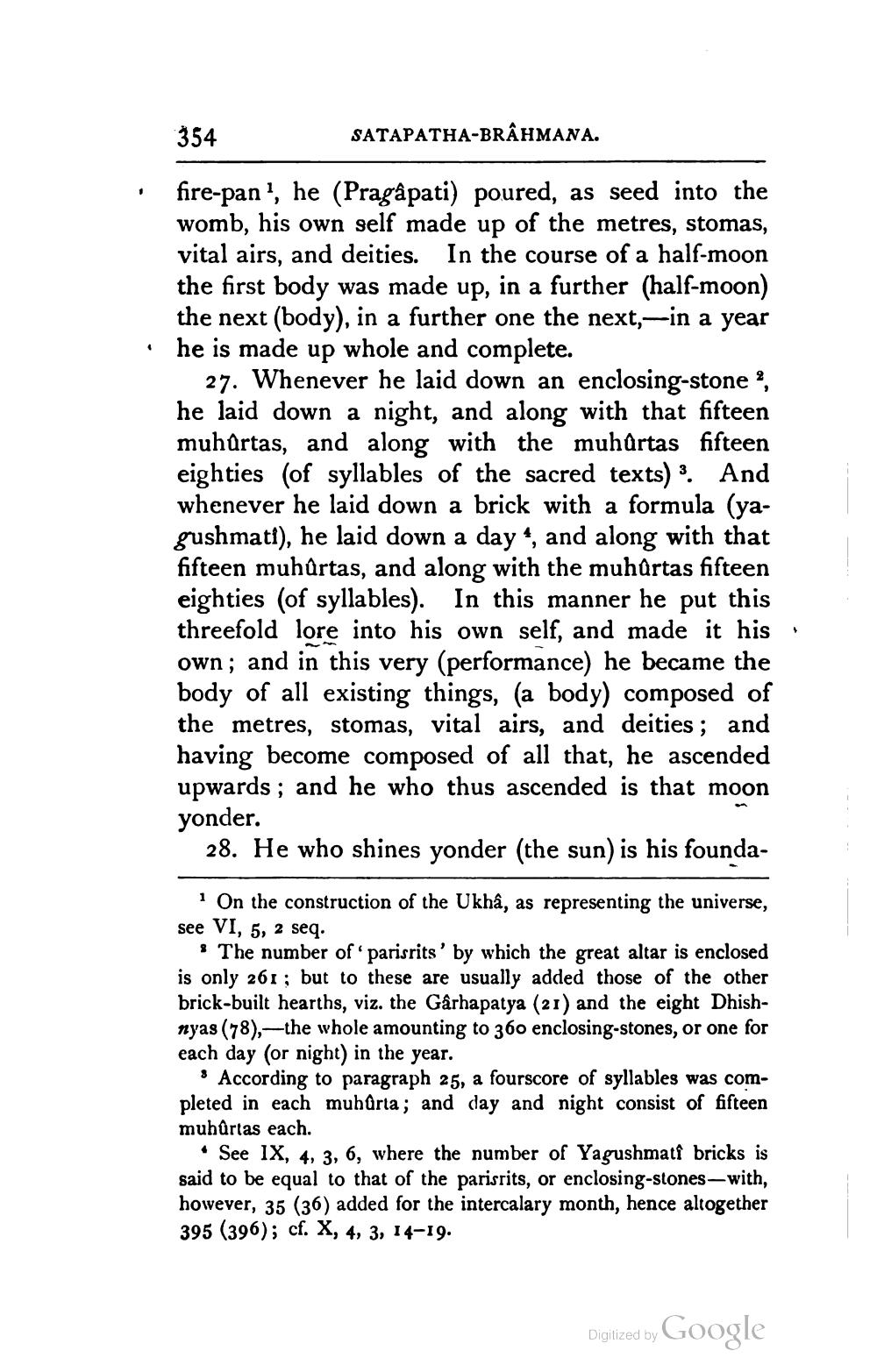________________
354
SATAPATHA-BRAHMANA. fire-pan!, he (Pragâpati) poured, as seed into the womb, his own self made up of the metres, stomas, vital airs, and deities. In the course of a half-moon the first body was made up, in a further (half-moon)
the next (body), in a further one the next, --in a year · he is made up whole and complete.
27. Whenever he laid down an enclosing-stone ?, he laid down a night, and along with that fifteen muhůrtas, and along with the muhůrtas fifteen eighties (of syllables of the sacred texts) 3. And whenever he laid down a brick with a formula (yagushmatt), he laid down a day , and along with that fifteen muhûrtas, and along with the muhůrtas fifteen eighties (of syllables). In this manner he put this threefold lore into his own self, and made it his own; and in this very (performance) he became the body of all existing things, (a body) composed of the metres, stomas, vital airs, and deities; and having become composed of all that, he ascended upwards; and he who thus ascended is that moon yonder.
28. He who shines yonder (the sun) is his founda1 On the construction of the Ukha, as representing the universe, see VI, 5, 2 seq.
The number of parisrits' by which the great altar is enclosed is only 261; but to these are usually added those of the other brick-built hearths, viz. the Garhapatya (21) and the eight Dhishnyas (78),—the whole amounting to 360 enclosing-stones, or one for each day (or night) in the year.
• According to paragraph 25, a fourscore of syllables was completed in each muhûrta; and day and night consist of fifteen muhûrtas each.
• See IX, 4, 3, 6, where the number of Yagushmati bricks is said to be equal to that of the parisrits, or enclosing-stones - with, however, 35 (36) added for the intercalary month, hence altogether 395 (396); cf. X, 4, 3, 14-19.
Digitized by Google




